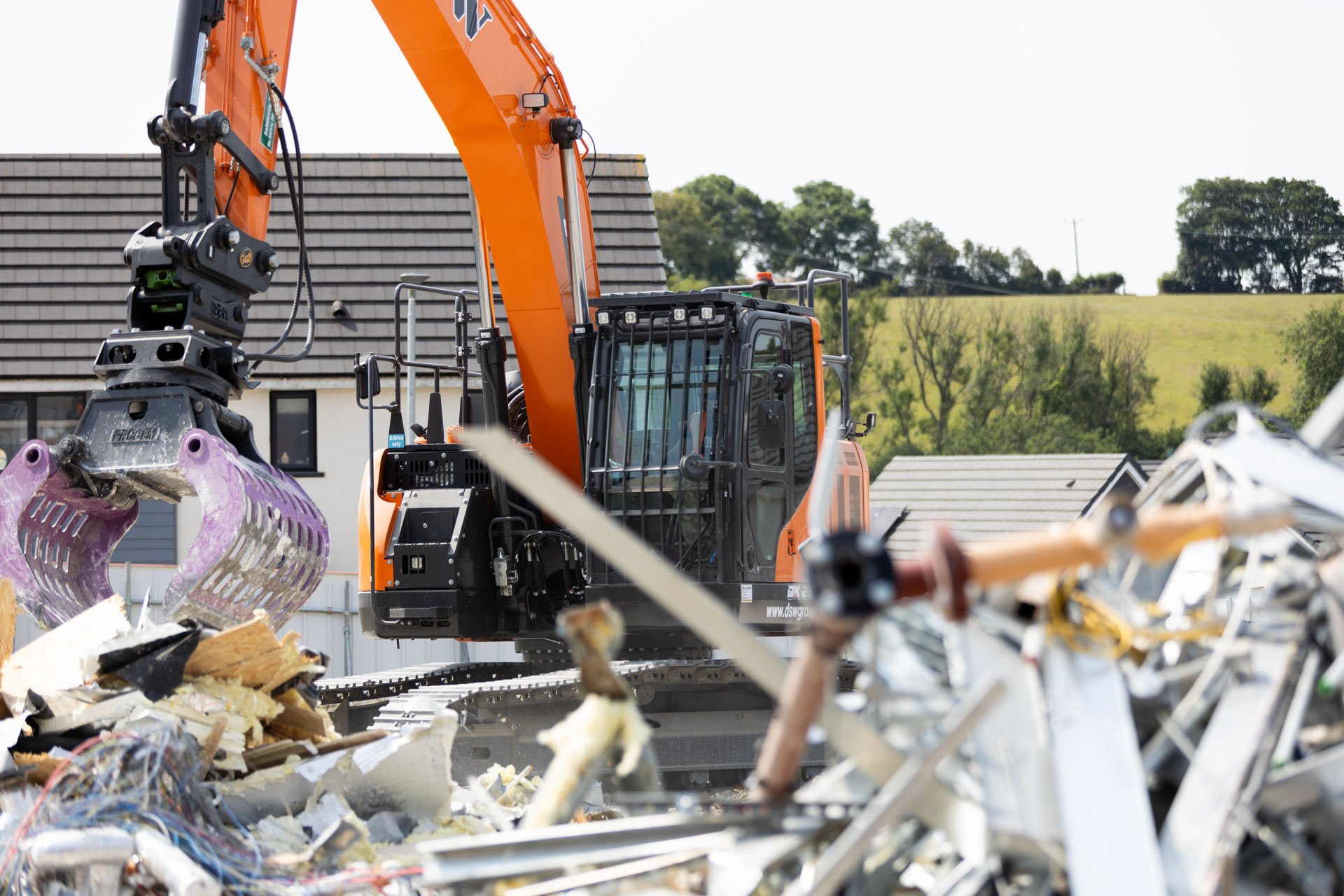Cornwall, a beautiful county in southwest England, is experiencing a remarkable transformation. With its stunning coastline, rich history, and vibrant culture, Cornwall has always been a popular tourist destination. But now, it is undergoing a regeneration that is reshaping its future. Demolition projects are playing a pivotal role in this process, clearing the way for new developments and opportunities. From abandoned buildings to outdated infrastructure, Cornwall is shedding its old skin and making way for modern advancements. This journey of demolition not only symbolises progress but also represents a commitment to preserving Cornwall’s unique heritage. As the county undergoes this transformation, it is attracting investment, creating jobs, and offering a fresh outlook for its residents. Join us as we explore how demolition is shaping the future of Cornwall and uncover the exciting possibilities that lie ahead.
The significance of regeneration projects
Regeneration projects are essential for the growth and development of any region. They breathe new life into communities, attract investments, and create opportunities for residents. Cornwall, with its rich history and natural beauty, has always been a popular destination for tourists. However, in recent years, the county has faced challenges such as abandoned buildings and outdated infrastructure. To overcome these hurdles and harness the full potential of the region, Cornwall has embarked on a journey of regeneration. Demolition plays a crucial role in this process, as it clears the path for new developments and paves the way for a brighter future.
Demolition not only removes structures that are no longer functional or safe but also opens up opportunities for new projects. It creates space for innovative designs and modern infrastructure that can attract businesses, investors, and visitors. Through targeted demolition projects, Cornwall is able to reposition itself as a thriving hub of economic activity and cultural significance. By clearing out the old, Cornwall is making way for the new, ensuring that the county remains relevant and competitive in the modern world.
Demolition as a catalyst for change
Demolition is often seen as a destructive process, but in the case of Cornwall, it is a catalyst for positive change. The demolition of dilapidated buildings and outdated infrastructure not only improves the aesthetic appeal of the county but also creates opportunities for growth and development. By removing barriers to progress, Cornwall can attract new investments and stimulate economic activity. Additionally, demolition projects can serve as a catalyst for community engagement and collaboration, bringing together stakeholders to shape the future of the county.
Cornwall’s regeneration efforts
Cornwall has recognised the need for regeneration and has taken proactive steps to shape its future. The county has implemented strategic plans and initiatives to address the challenges it faces and maximise its potential. One of the key components of these efforts is demolition. Cornwall business and government has identified structures that are no longer viable and is systematically removing them to make way for new developments. This approach ensures that the county’s resources are utilised effectively and that regeneration efforts are targeted and impactful.
Examples of successful demolition projects in Cornwall
Cornwall has seen several successful demolition projects that have transformed the landscape of the county. One notable example is the redevelopment of the South Quay area in Hayle. Through a series of demolition projects, the area was cleared of old industrial buildings, making way for a vibrant mix of residential, commercial, and leisure spaces. The project not only regenerated the area but also created jobs and attracted investment.
Another successful demolition project is the transformation of the area surrounding Caradon Hill transmitting station in Bodmin Moor. The site has been cleared and is now being developed into a nature reserve and visitor attraction. This project not only preserves the natural beauty of Bodmin Moor but also provides opportunities for education and tourism.
Economic benefits of regeneration through demolition
Regeneration efforts through demolition have significant economic benefits for Cornwall. By clearing out old and dilapidated structures, the county creates space for new developments that can attract businesses and investors. These new projects generate economic activity, create jobs, and contribute to the overall growth of the county. Additionally, regeneration efforts can increase property values, stimulating the real estate market and providing opportunities for homeowners and developers.
Furthermore, the tourism industry in Cornwall stands to benefit from these regeneration efforts. By creating attractive and modern spaces, the county can attract more visitors, boosting the local economy and supporting businesses in the tourism sector. The economic benefits of regeneration through demolition extend beyond the immediate construction phase, providing long-term opportunities for growth and prosperity.
Challenges and considerations in demolition projects
While demolition is an essential part of Cornwall’s regeneration efforts, it is not without its challenges and considerations. One of the primary challenges is ensuring the safe and environmentally responsible execution of demolition projects. It is crucial to minimise the impact on the surrounding environment, including noise pollution, dust, and waste management. Proper planning and adherence to regulations are essential to mitigate these challenges and ensure that demolition projects are carried out in a sustainable manner.
Another consideration is the preservation of Cornwall’s unique heritage. As the county undergoes regeneration, it is important to strike a balance between progress and preserving its historical and cultural identity. Demolition projects must carefully consider the significance of the structures being removed and explore opportunities for preserving elements of Cornwall’s heritage. This can be achieved through adaptive reuse, where historical buildings are repurposed for modern use, or through the documentation and interpretation of demolished structures to keep their memory alive.
Community engagement in regeneration efforts
Regeneration efforts cannot be successful without the involvement and support of the community. Cornwall has recognized the importance of community engagement in shaping the future of the county and has made efforts to involve residents in the decision-making process. Through public consultations, workshops, and open forums, Cornwall ensures that the voices of its residents are heard and considered. This collaborative approach not only fosters a sense of ownership and pride among the community but also leads to more informed and sustainable decisions.
Sustainable demolition practices in Cornwall
Cornwall is committed to implementing sustainable practices in its demolition projects. These practices aim to minimise the environmental impact of demolition and ensure the responsible management of waste. One example of sustainable demolition is the recycling and reuse of materials from demolished structures. By salvaging materials such as bricks, timber, and metal, Cornwall reduces the demand for new resources and minimises waste sent to landfills. Additionally, the county promotes the use of environmentally friendly construction methods and materials in new developments, further contributing to its sustainability goals.
Future prospects for regeneration in Cornwall
The future of Cornwall’s regeneration efforts looks promising. The county’s commitment to demolition as a catalyst for change, combined with sustainable practices and community engagement, sets the stage for continued progress. As Cornwall sheds its old skin and embraces modern advancements, it attracts investment, creates jobs, and offers a fresh outlook for its residents. The regeneration projects in Cornwall are not only transforming the physical landscape but also shaping the future of the county, ensuring that it remains a vibrant and thriving destination for years to come.
Conclusion
Cornwall’s regeneration journey is a testament to the power of demolition in shaping the future of a region. By clearing the way for new developments and opportunities, Cornwall is attracting investment, creating jobs, and preserving its unique heritage. The county’s commitment to sustainable practices and community engagement ensures that the regeneration efforts are targeted and impactful, fostering a sense of ownership and pride among residents. As Cornwall continues on its path of regeneration, the possibilities for growth and prosperity are endless. The county’s rich history and natural beauty, combined with modern advancements, make it a destination that is both rooted in tradition and ready to embrace the future.


